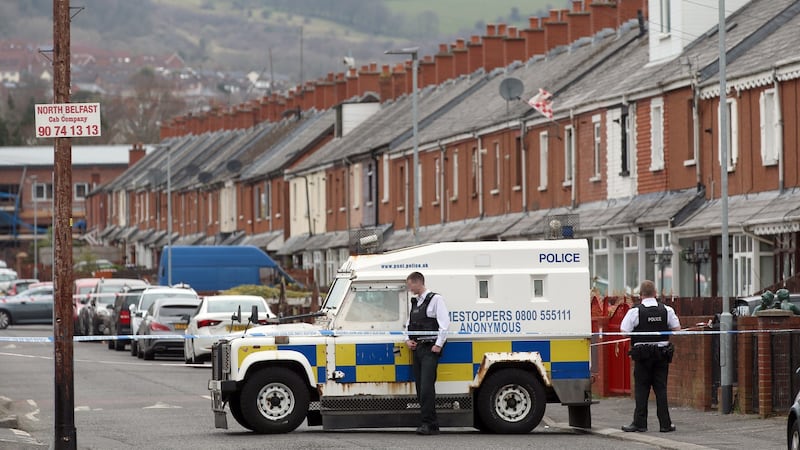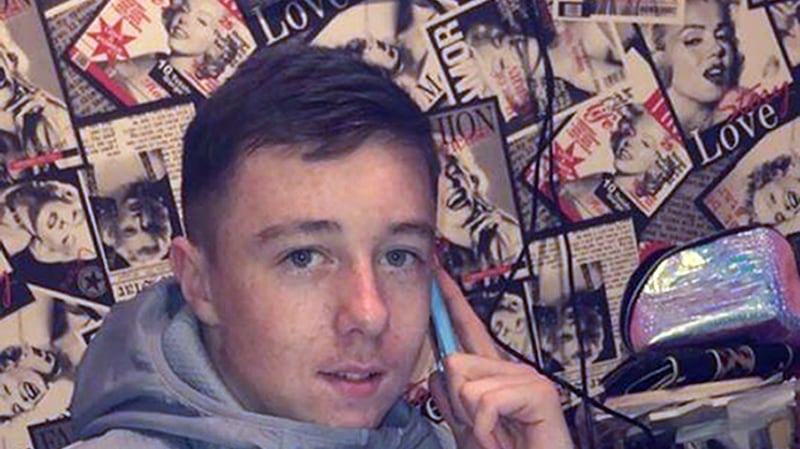Last Saturday afternoon, just hours after the murder of Robbie Lawlor (36) in Belfast, a group of young men clad in tracksuits and drinking beer and vodka gathered to cheer in the front garden of a north Dublin house.
The scene in Darndale was filmed by one of the group on a phone and circulated along with other videos of different people celebrating Lawlor’s murder. These were, according to gardaí, intended to taunt the dead man’s associates and bore chilling similarities to actions that fueled Limerick’s gang feud almost two decades ago.
When Kieran Keane (36), a leading Limerick drug dealer, was shot dead in Drombana, Co Limerick on January 29th, 2003, there were similar celebrations staged as part of a feud there that resulted in up to 20 murders.

The Limerick feud may be no more, but the dynamics of that decade-long gun violence spree are being repeated in the Drogheda feud, of which Lawlor is the latest victim. Moreover, there is some evidence that elements of the McCarthy-Dundon gang who were at the centre of the Limerick violence are now involved in the Drogheda feud.
Lawlor was shot dead last Saturday just before noon outside a house in Ardoyne, north Belfast either as part of the Drogheda feud, gardaí believe, or else over a drugs debt owed to him by Belfast criminals; or perhaps a combination of both.
The precise motive may take some time to emerge, but his killing will have a very significant impact in the Drogheda feud, just as Keane’s murder had in Limerick almost two decades ago. The similarities between the two feuds don’t stop there.
One-sided feuding
While dubbed the Limerick “feud”, the gun killings in Limerick took the shape of the McCarthy-Dundon gang lashing out at its rivals and those who dared to challenge them; an onslaught of violence perpetrated by the gang rather than a feud. Evidence has been accruing in recent months suggesting the Drogheda-based gangland violence is going the same way.
Lawlor (36) was originally from north Dublin but had lived in Laytown, Co Meath, for a period and was involved on the drugs scene in the northeast, with his brother-in-law Richard Carberry.
It appears Lawlor became convinced the 17-year-old aided the murder of Carberry in some way
When the feud erupted almost two years ago the gang Lawlor and Carberry were aligned to gained the upper hand, carrying out a series of gun attacks that wounded, but did not kill, its rivals. However, when a leading criminal aligned to the then “losing side” in the feud returned to the north-east last year, the tide turned.
That man is suspected of three gun murders predating the feud. His re-emergence after a period away was followed by the shooting dead of Keith Branigan at a Co Louth caravan park last August and the shooting dead of Richard Carberry outside his home in Bettystown, Co Meath, last November.
Lawlor, who was freed from prison late last year after avoiding conviction on serious charges, was intent on seeking revenge for his brother-in-law’s murder. He was the chief suspect for the killing and dismembering in January of Drogheda teenager Keane Mulready-Woods.
It appears Lawlor became convinced the 17-year-old aided the murder of Carberry in some way. With Lawlor now dead, a significant figure on the side of the feud that had already been on the back foot has been removed from the dispute. Other figures on that side are also expected to be jailed for some of the early feud attacks, a situation that would clear the way for the opposing gang to attack their rivals at will, as the McCarthy-Dundons did for so long in Limerick.
Outside influences
Dissident republicans supplied firearms to the gangs involved in the violence in Limerick, and gangland criminals from Dublin and the UK were hired by the McCarthy-Dundons to carry out murders. It resulted in a complicated and unpredictable mix of violence that was often well-planned and very hard to investigate – perpetrators often not on the radar of the Garda and having no link to the victims.
It now appears what remains of the McCarthy-Dundon gang, which isn’t much, was working with Robbie Lawlor. One of the gang’s members and his 17-year-old relative, as well as their associate from outside the jurisdiction, travelled to Belfast with Lawlor, apparently to enforce a significant drugs debt in Ardoyne, last Saturday. Lawlor was instead shot dead there.

Lawlor was suspected of murdering several people, with some of the killings over a decade ago
The presence of the Limerick men in Belfast with Lawlor has exposed their involvement with him and it almost certainly draws them into the Drogheda dispute. Lawlor’s side will suspect they set him up. If they did not, the opposing side will regard them as Lawlor’s allies.
The McCarthy-Dundons aside, Dublin criminals are now involved in the Drogheda feud.
Lawlor was suspected of murdering several people, with some of the killings over a decade ago. One of the murders was that of Ken Finn (36) in Darndale, north Dublin, two years ago.
Finn was a suspected gunman who worked for a major criminal figure from a middle-class suburb in Dublin. That gang leader wanted to kill Lawlor in revenge for the fatal attack on Finn, and gardaí believe that the Dubliner will remain involved in the Drogheda feud, aiding the stronger side to attack Lawlor’s associates.
His continued involvement in the dispute in Drogheda would be incendiary, as he has organised several murders, including that of dissident Republican leader in Dublin Alan Ryan (32) in Dublin in 2012.
Personal grudges
Not long after Robbie Lawlor was released from prison late last year, he encountered a group of teenage criminals on the street in Dublin, one of whom recorded the encounter on his phone. The teenagers taunted Lawlor and the person recording the incident lashed out at Lawlor with a punch.
In response he took his gym bag off his shoulder in a bid to take on the young men. When he did so his bag was stolen and a new pair of flip-flops taken from it. In the weeks that followed, the young men carried the flip flops around and photographed themselves wearing them in different locations, sending the photographs around those involved in the Drogheda feud to taunt Lawlor.
This incensed him and, when the dismembered limbs of Keane Mulready-Woods (17) were found in a bag in Coolock, north Dublin in January, his killers had placed a pair of flip-flops in the bag. Gardaí believe Lawlor did this as a chilling message to those who had attacked him.
Detectives saw the incident as an example of the petty and personal motivations behind much of the Drogheda feud violence. The videos that emerged last weekend of different people celebrating Lawlor’s murder were, according to gardaí, intended to taunt his associates and it is feared they will beget more shootings.
The violence in Limerick was locked into the same pattern: perceived slights against a members of the McCarthy-Dundon gang or their family members often resulting in a brutal attacks. In some cases in Limerick when the partners of the principal criminals met by chance on the street, they would fight, heightening tensions again.
While personal grudges are often at the centre of gangland disputes, the taunting that stoked Limerick’s violence was notable. The Drogheda violence is similar, with advances in technology now enabling those involved to record their taunts. These have included phone calls to rivals after attacks with those involved disseminating the footage, photographs and audio via messaging apps.
These often emerge publicly very quickly, ensuring constant growth in the intense hatred between the rival factions.
Family ties
In both the Drogheda and Limerick feuds, families feature prominently in the violence. This leads to tight groups at the centre of feuding gangs who are fiercely loyal to each other. Very few of those involved ever speak to the Garda as it would mean betraying their own families. And the criminals involved will go to extraordinary lengths to ensure a rival does not score a victory over a fellow gang member who doubles as a relative.
All of these factors make family-based gangs extremely difficult to break from a policing perspective. The Kinahan cartel, Hutch faction, Crumlin-Drimnagh feud, the Westies in Blanchardstown and their rivals, and the McCarthy-Dundons and the opposing Keane-Collopy faction in Limerick are just some of the criminal networks with family ties at their centre – though most members of the principal criminals’ families are not involved in crime.
With at least three men shot dead in the Drogheda feud to date (four if Robbie Lawlor’s murder is later confirmed as feud-related), that dispute is already entrenched. With sets of brothers involved on both sides, the strength of both groups will take a sustained effort by the Garda to degrade.
In many of the trials that led to the jailing of key figures in the Limerick feud, technical evidence garnered from mobile phone contact proved instrumental. With gangland criminals now more tech-savvy, the Drogheda feud may prove much more difficult to crack.










